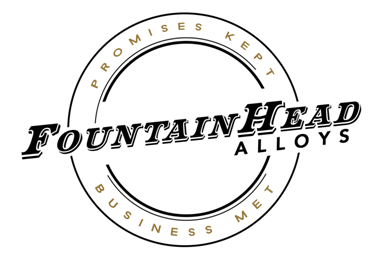Alloy 800 | UNS N08810 | Inconel 800 | DIN 17460 | EN 10095 | AMS 5871 | ASTM A 240/A 480 | ASME Code Case 1325 | SEW 470 | VdTUV 412 | NACE MR-01-75 | Werkstoff Nr 1.4876
The story of the “INCOLOY alloys series,” from 800, through 800H, 800HT
The INCOLOY 800 series of alloys, invented by the Special Metals Corporation Group of Companies, is the result of years of monitoring and maintaining the ultimate chemical properties for high-temperature strength and resistance to oxidation, carburization and other types of high-temperature corrosion.
Each one a refinement of the one before, these alloys have set the industry standard in high-temperature applications requiring optimum creep and rupture properties.
INCOLOY nickel-iron-chromium alloy 800 was introduced to the market in the 1950s to fill the need for a heat- and corrosion-resistant alloy with a relatively low nickel content since nickel was, at the time, designated a “strategic” metal. Over the past forty years it has been widely used for its strength at high temperatures and its ability to resist oxidation, carburization, and other types of high-temperature corrosion. Applications include furnace components and equipment, petrochemical furnace cracker tubes, pigtails and headers, and sheathing for electrical heating elements.
In 1963, the alloy was approved by the ASME Boiler and Pressure Vessel Committee, and the design stresses were published in Code Case 1325. For the first time, aluminum and titanium were listed as purposeful additions (at 0.15 to 0.60% each), and annealed material was differentiated from solution-annealed material. The new terms “Grade 1 annealed at approximately 1800°F (980°C)” and “Grade 2, annealed at approximately 2100°F (1150°C)” came into use. The Code Case covered Sections I and VIII, and listed design stresses for Grade 1 to 1100°F (593°C) and for Grade 2 to 1500°F (816°C).
Over the next few years, the Committee made several revisions. In 1965, extruded tube was accepted as Grade 2 material without heat treatment. By the following year, ASTM specifications had been approved for INCOLOY alloy 800, and these were listed to replace those covering INCONEL alloy 600. In 1967, an external pressure vessel chart for Grade 1 was added, and the following year the same addition was made for Grade 2.
In 1969, design stresses were increased as a result of changes in the criteria to determine those stresses. The minimum tensile strength curve was increased 10% and the rupture criterion was increased from 62.5 to 67% of the extrapolated 100,000 hour rupture strength. Six months later, the Case was changed from covering Sections I and VIII to Section I only since the design stresses for Section VIII had been included in Table UNF-23. There were also two sets of design stresses listed for each grade, one giving the values when the two-thirds yield strength criterion was used, the other when 90% of yield strength was used.
Information describing INCOLOY alloy 800 is available in Special Metals publication SMC-045.
INCOLOY alloy 800H (UNS N08810)
It had been known for some time that higher carbon alloy 800 had higher creep and rupture properties than low-carbon material. For that reason, Special Metals had melted to a carbon range of 0.05 to 0.10% except for special orders where customers specified a lower carbon content. The carbon range of 0.05 to 0.10% is within the ASTM and ASME specification limits for alloy 800 and is in the upper portion of that range.
Special Metals generated data for this material and presented them to the ASME Code. The Code approved higher design stresses for Section I and Divisions 1 and 2 of Section VIII, which appeared in Code Case 1325- 7. Note that alloy 800H required not only a carbon range of 0.05 to 0.10% but also an average grain size of ASTM 5, or coarser
With the issuance of Code Case 1325-7 and the common use of the term “800H”, there was no longer a need to refer to “Grade 2” because it was replaced by 800H, and the material that had been called Grade 1 became, simply, INCOLOY alloy 800.
INCOLOY alloy 800HT (UNS N08811)
Several other alloy manufacturers entered the alloy 800H (UNS N08810) market and additional creep and rupture data became available. The Metals Property Council for ASME gathered this data and made a new analysis using parametric procedures, involving 87 heats and 1,052 data points. The additional data, from other manufacturers, included results with considerably lower strength, and the new analysis, which reflected the results of all the available data, resulted in a recommendation that the design stresses be revised. These revised values were lower for temperatures of 1100 through 1500°F (593-816°C), and about the same for 1600 and 1650°F (871 and 899°C).
Special Metals knew the importance of maintaining the aluminum and titanium contents in the upper portion of the specified material range. This resulted in higher creep and stress rupture properties than competitive alloy 800H. Therefore, to maintain higher allowable design stresses, the company introduced a variation of INCOLOY alloy 800H which is called INCOLOY alloy 800HT (UNS N08811). INCOLOY alloy 800HT has a restricted chemistry, within the limits of alloy 800H, and requires a heat treatment of 2100°F (1149°C) minimum. The carbon is 0.06 to 0.10% (alloy 800H is 0.05 to 0.10%), the Al + Ti is 0.85 to 1.20% (alloy 800H is 0.30 to 1.20% Al + Ti)
Specifications
Alloy 800 – UNS N08800
Alloy 800H – UNS N08810
Alloy 800HT – UNS N08811
Rod – ASTM B 408, ASME SB 408, ISO 9723, BS 3076NA15, DIN 17460, EN 10095
Bar – ASM 5766, ASTM B 408, ASME SB 408, ISO 9723, BS 3076NA15, DIN 17460, EN 10095
Wire – ISO 9724, BS 3075NA15
Forgings – AMS 5766, ASTM B564, ASME SB 564, ASME Code Case 1949, ISO 9725, DIN 17460
Plate – AMS 5871, ASTM A 240/A 480, ASME SA 240/SA 480, ASTM B 409/B 906, ASME SB 409/SB 906, BS 3072NA15, DIN 17460, EN 10028-7, EN 10095
Sheet – AMS 5871, ASTM A 240/A 480, ASME SA 240/SA 480, ASTM B 409/B 906, ASME SB 409/SB 906,BS 3072NA15, DIN 17460, EN 10028-7, EN 10095
Strip – AMS 5871, ASTM A 240/A 480, ASME SA 240/SA 480, ASTM B 409/B 906, ASME SB 409/SB 906,BS 3073NA15, DIN 17460, EN 10028-7, EN 10095
Pipe – ASTM B 407/B 829, ASME SB 407/SB 829 (Seamless Pipe), BS 3074NA15 (Seamless Pipe), DIN 17459
Tube – ASTM B 163, ASME SB 163 (Seamless Condenser & Heat Exchanger Tubes), ASTM B 407/B 829,ASME SB 407/SB 829 (Seamless Tube), ASTM B 515/B 751, ASME SB 515/SB 751 (Welded Tubes),BS 3074NA15 (Seamless Tubes), ISO 6207, DIN 17459
Other – ASTM B 366, ASME SB 366 (Fittings) – ASME Code Cases N201 & N254 (All products for nuclear construction), ISO 4955A (General), NACE MR-01-75, AFNOR Z5 NC 35-20, Werkstoff Nr 1.4876,UNS N08810, N08811
All – ASME Code Case 1325, SEW 470, VdTUV 412 and 434, Incoloy 800
FountainHead Alloys is ISO 9001:2015 approved. © FountainHead Alloys 1996

